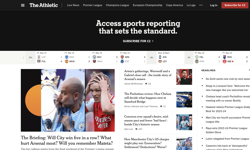The big action will commence with the first-quarter launch of a digital newsstand from Next Issue Media (NIM) consortium comprising Time Inc, Hearst, Meredith, Condé Nast and News Corp. So far, we know that the storefront will initially sell only the brands of the NIM founding companies, and that digital offerings will be compatible only with Android devices — although NIM president/CEO Morgan Guenther said they will also be Apple- and Web-OS-ready, in anticipation of “striking the right deals”.
At this writing, major magazine publishers’ standoff with Apple over customer data sharing and other terms regarding selling subscription-based apps continues, although publishers are hoping that the digital newsstand launch will cause Apple to proffer more acceptable conditions. (At least outside of NIM, News Corp clearly has its own, more amenable relationship with Apple.)
Apple or no Apple, the significance, of course, is that this digital newsstand will mark the inception of efforts to market subscription-based magazine apps on a truly mass basis. While the storefront will also sell single copies, the most riveting aspects will be watching how these giants, who represent 80% of US subscription volume, choose to structure and price apps and bundled digital / print subscriptions; how they go about driving consumer awareness and trials; and how consumers will respond, initially and over time.
How will publishers leverage the opportunity to offer advertisers scalable yet targeted audiences alongside their stated objective of maximising consumer-contributed revenue, and within the context of the many moving pieces of the overall digital and print puzzle?
Will publishers price digital-only and digital / print subs at current print levels, or “incentivise” uptake by new readers and so maximise audience reach levels for advertisers, with even lower introductory subscription rates? Will existing print subscribers — who will apparently have the option of converting to a print / digital bundle — get digital access as a free “value-added,” or for a minor upcharge, with potential renewal and advertising revenue benefits in mind? Will consumers be able to buy packages that include magazines from two or more publishers?
Bottom line, what are publishers’ strategies for hedging the risk of undermining core, bird-in-the-hand revenues / profits from print revenue streams during the next several (at least) years, as they seek to build profitable, long-term streams from these still-nascent media consumption channels?
Tablet penetration
Yes, e-tablet penetration is growing exponentially, and US publishers’ plans undoubtedly factor in some level of worldwide sales potential. However, the US, which is expected to account for the bulk of tablet sales through 2012, is undoubtedly the dominant focus. And as of 2010, research publisher eMarketer estimates that just 9.7 million Americans (3% of the population) owned e-tablets of any kind (with iPads having an 88% share). Assuming that eMarketer’s projections hold water, and US tablet owners grow to 41 million by 2012, they will represent under 13% of the population (with iPads having a 74% share).
Consumers with e-readers “are a fraction of the media-consuming public, and those who would buy magazine apps are a fraction of those,” noted media consultant Dorian Benkoil, writing in PBS.org. “Even if a subscription model comes to all [e-reader] devices, revenues in the near- or even medium-term are not likely to match print overall.” Large publishers are optimistic, but acknowledge that “it’s too soon to tell what the ultimate [app] business will be,” he added.
Of course, tablets aren’t the only game in town — indeed, the Web-enabled phone user base dwarfs that of tablets. In first-half 2010, ComScore and others estimated about 45 to 50 million smartphone owners in the US alone. Gartner estimated that smartphones accounted for 19% of a total of 325.6 million worldwide mobile device sales in Q2 2010, and Nielsen projects that smartphones will represent 50% of the US mobile phone market by year-end 2011.
But given the pace of change and unknowable course of digital communications, asking how many tablet or smartphone users will become consistent purchasers of magazine apps may be too limited and short-term a perspective.
In a December Advertising Age interview, Time Inc CEO Jack Griffin (without mentioning Apple) expressed confidence that the emerging landscape of “untethered devices” will offer ample opportunities to “present and render [Time Inc] products to consumers” within the framework of direct relationships with consumers / subscribers that constitute the “lifeblood” of the publishing business. When the company sells advertising, it’s selling access to those customer relationships, he said, also stressing that “we're not thinking… in terms of what piece of this is paid and what piece isn't… content is not free.”
Most tellingly, Griffin confirmed that Time Inc views digital opportunities as going far beyond just marketing content in the form of interactive magazine issues, or just leveraging app technology — that the vision is reaching consumers with myriad types of Time Inc offerings through every viable current or emerging channel. “The key phrase to summarise our approach is, ‘everywhere, anywhere,” he said. “Our business model will be built on the concept that the customer ought to be able to interact with us once and find our content wherever he or she is. We've built the technology to enable that, and that's where we're headed… [This] opens up all new conversations and channels, and it starts to redefine the legacy business. That's the real promise of digital.”










